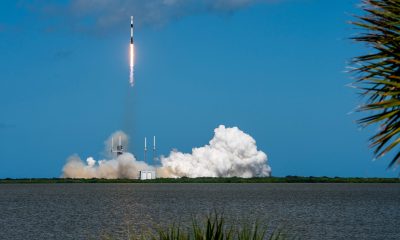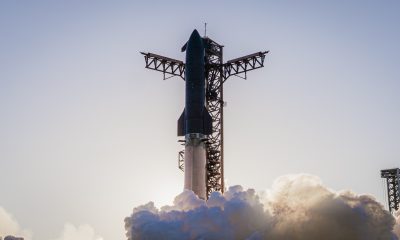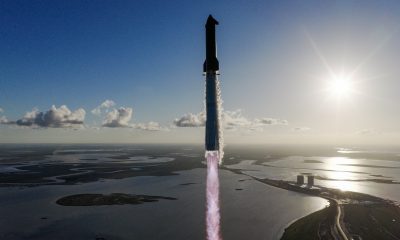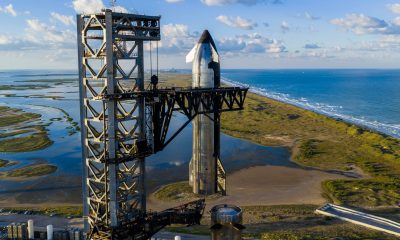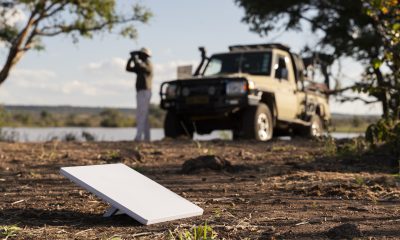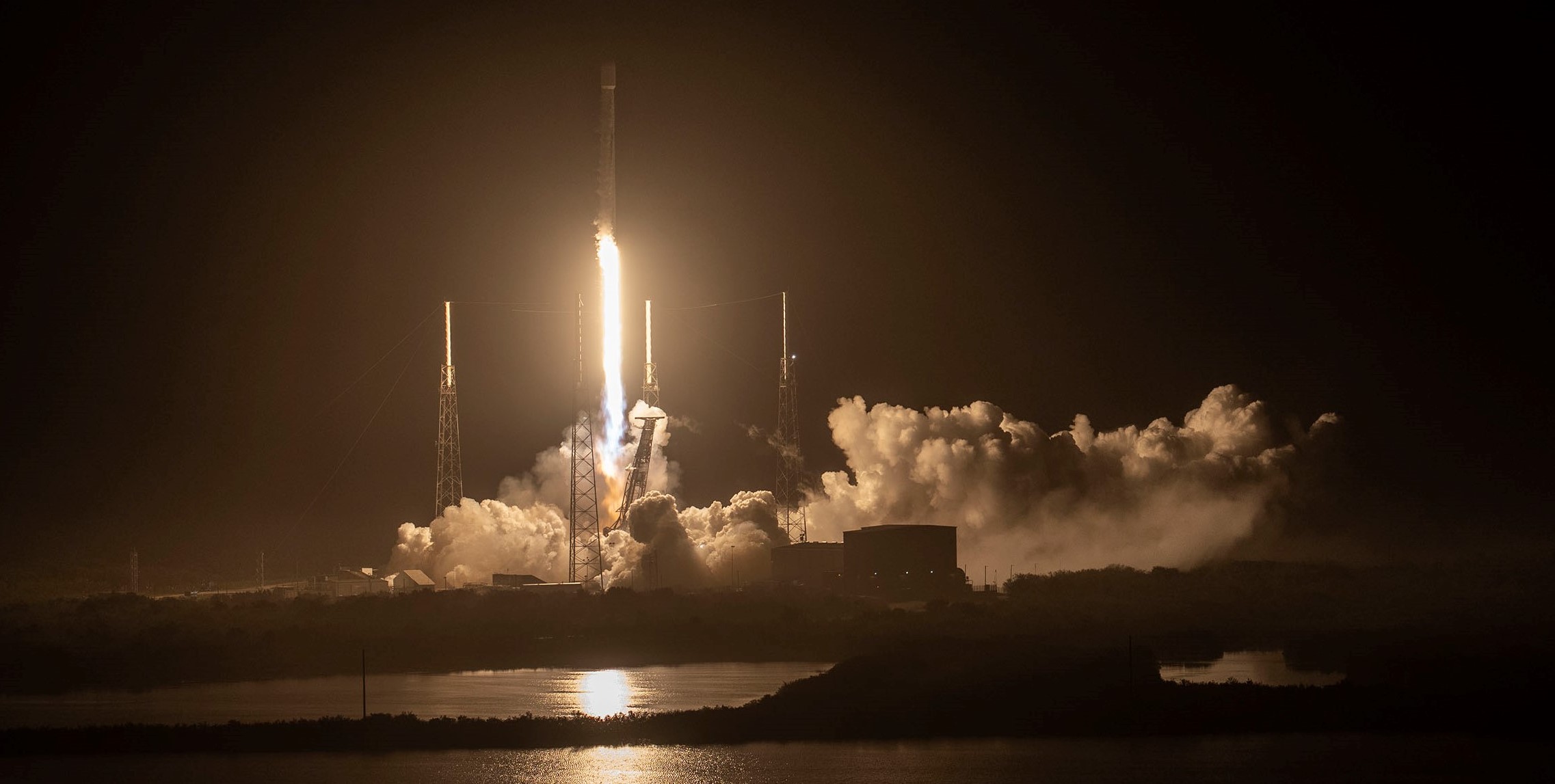
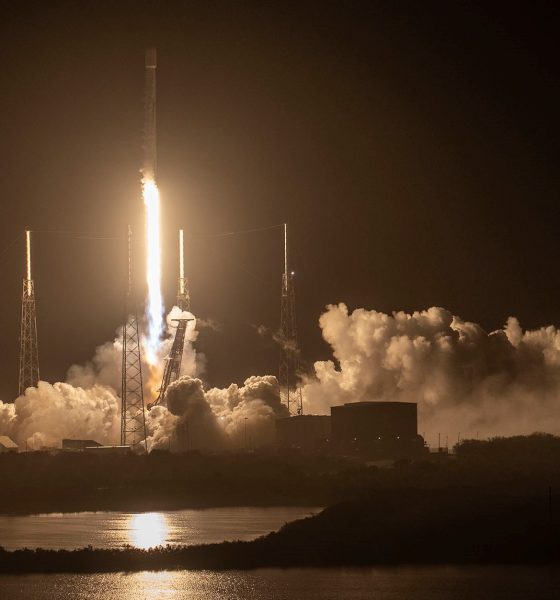
News
SpaceX expends third Falcon booster in one month
SpaceX has expended a Falcon booster for the third time this month, breaking an odd internal record for a company famous for reusable rockets.
Demonstrating why SpaceX often attempts to launch even when weather forecasts predict a 10% chance of favorable conditions, Falcon 9’s second launch attempt of the day went off without a hitch after the first attempt – Cargo Dragon’s CRS-26 space station resupply mission – was scrubbed by weather six hours prior. Flying for the eleventh and final time, Falcon 9 booster B1049 lifted off from SpaceX’s Cape Canaveral Space Force Station (CCSFS) LC-40 pad at 9:57 pm EST (02:57 UTC) carrying French communications provider Eutelsat’s Eutelsat 10B satellite.
B1049 – the oldest booster in SpaceX’s fleet – took advantage of the extra performance enabled by removing landing hardware and propellant reserves and reached a peak velocity of 2.75 kilometers per second (~6150 mph) before separating from Falcon 9’s upper stage. Lacking the propellant needed to slow down, B1049 was likely destroyed when it reentered Earth’s atmosphere. The upper stage performed nominally, entering a parking orbit around 300 kilometers (200 mi) before igniting for a second time to boost the 5.5-ton (~12,000 lb) Eutelsat 10B satellite into a geosynchronous transfer orbit (GTO).
Thanks to B1049’s sacrifice, that GTO will be “supersynchronous,” meaning that the high end of the elliptical orbit – with the other end still around 300 kilometers – will likely end up around 60,000 kilometers (~37,500 mi) above Earth’s surface. A geosynchronous orbit is a circular orbit at an altitude of around 35,800 kilometers (~22,250 mi), where orbital velocity matches the speed of Earth’s rotation and allows a satellite to hover over a region of choice.
A supersynchronous GTO allows a satellite to circularize its orbit more efficiently, saving a significant amount of propellant. The relatively low cost of geostationary stationkeeping means that saving even a modest amount of propellant can add years of life to a satellite, increasing the maximum amount of revenue it can generate in its lifetime. Additionally, the higher orbit should allow Eutelsat 10B to begin serving customers a few weeks earlier. While Eutelsat likely had to pay an unknown fee (perhaps tens of millions of dollars) for SpaceX to expend B1049, the benefits must outweigh that added cost.
Culling the herd
The unprecedented culling of SpaceX’s rocket ‘herd’ began on November 1st when the company intentionally expended one of three Falcon Heavy boosters (B1066) during the massive rocket’s first launch since June 2019. Four launches into its life, SpaceX has never successfully recovered a Falcon Heavy center core – a trend that appears unlikely to end anytime soon thanks to a string of 2023 launches that will all reportedly demand extra performance from the rocket.
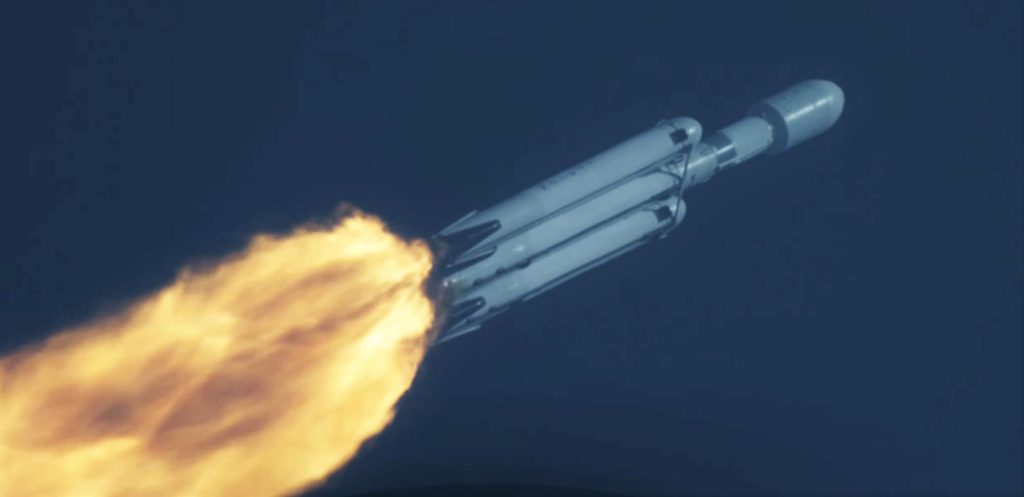
Next, on November 12th, SpaceX launched Intelsat’s Galaxy 31 and Galaxy 32 satellites to a similar supersynchronous transfer orbit, expending Falcon 9 booster B1051 in the process. Following B1049’s demise on November 22nd, SpaceX has expended a record three Falcon boosters in one month. The last time SpaceX intentionally expended two Falcon boosters in the same month was June 2018.
SpaceX’s rocket fleet now has 14 flight-proven Falcon boosters with an average of 8.7 launches per core. At least two new reusable boosters (B1076 and B1078) will enter the fleet within the next several months.
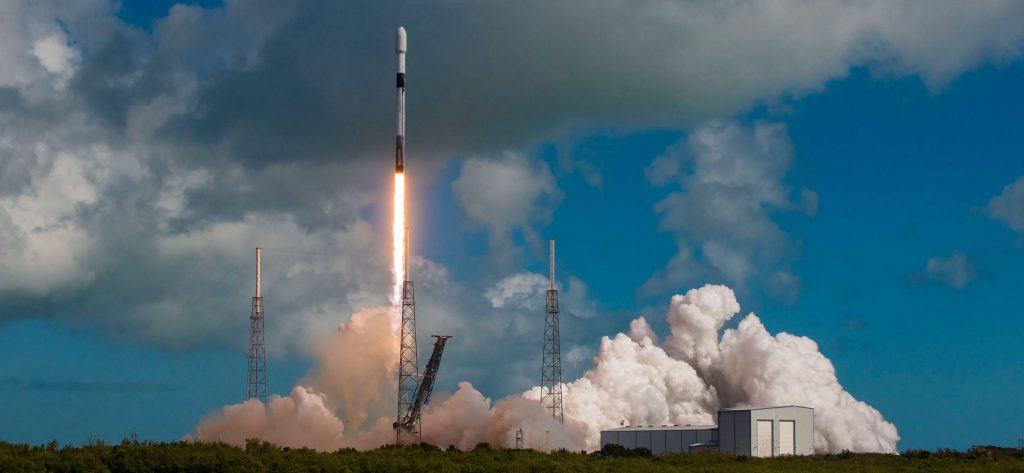
News
Tesla makes a massive change to a Service policy that owners will love
If you have a subscription to Full Self-Driving or Premium Connectivity for 30 days, the date of its expiration is 30 days after you activate the subscription, even if the vehicle was in service.
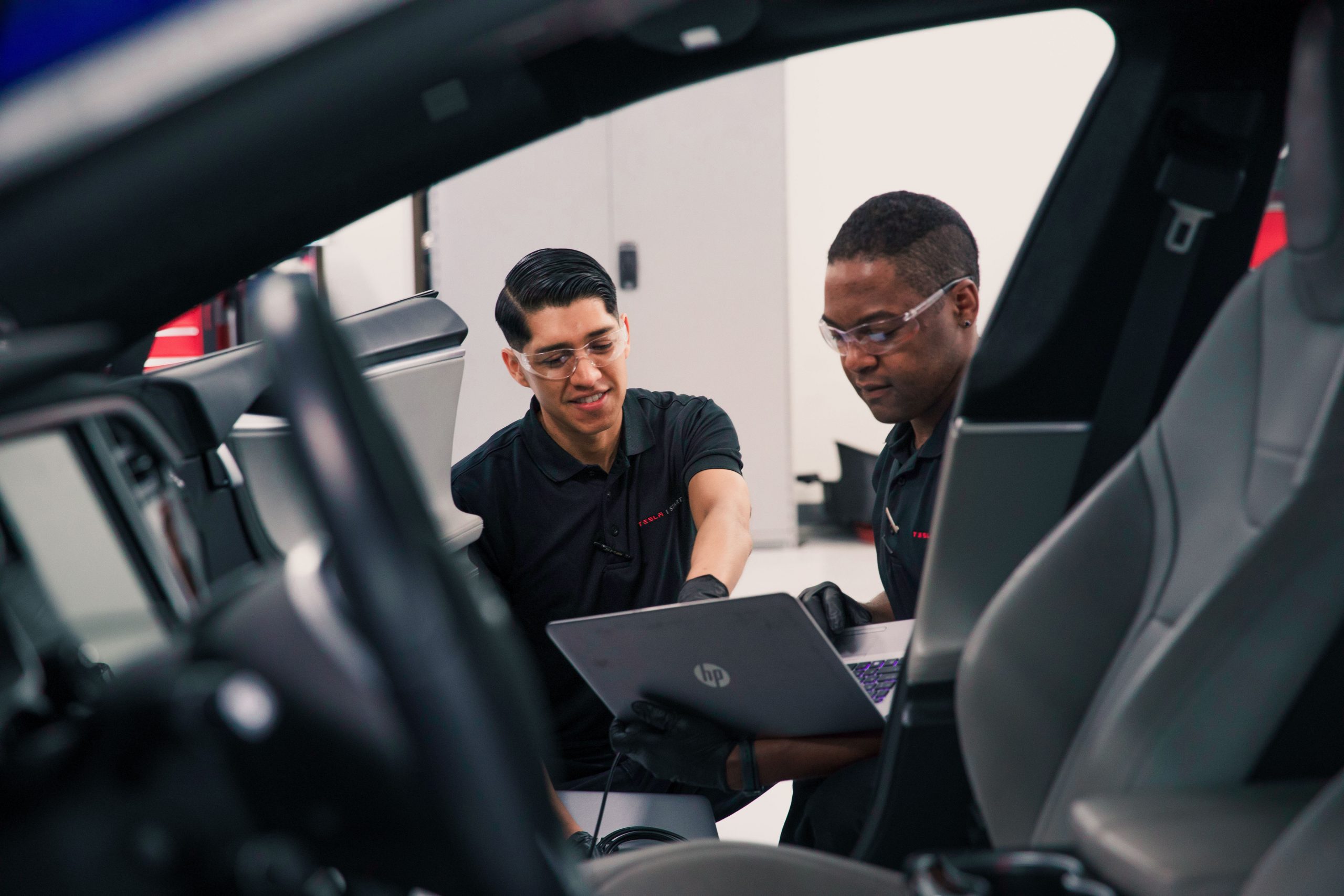
Tesla has decided to update its policy on Subscriptions and Service, and owners are going to love it.
If you have a subscription to Full Self-Driving or Premium Connectivity for 30 days, the date of its expiration is 30 days after you activate the subscription, even if the vehicle was in service.
So, if your car was with Tesla Service for five days, you essentially lost those five days, as your expiration date was not adjusted to reflect the time the vehicle was unusable.
Loaners that Tesla gives owners are usually equipped with perks like Full Self-Driving and Premium Connectivity, so your subscription does not roll over to another vehicle.
However, Tesla has decided to revise that policy in an effort to give owners full access to the subscriptions they paid for. It requires Service visits to be longer than one day.
In a communication to an owner who was having their vehicle serviced, Tesla said:
“A loaner vehicle may be available during your appointment (pending availability) – please check the app closer to your appointment for the latest updates and access details. If your repair requires more than one business day, any active subscriptions or free trials will be extended accordingly.”
Tesla will now extend active subscriptions and free trials if your car was in service for more than 1 business day pic.twitter.com/HdtDEwk3e6
— Whole Mars Catalog (@WholeMarsBlog) October 20, 2025
The move is a good one from a customer service standpoint, especially considering the loss of even a few days of a 30-day subscription to something like Full Self-Driving, which costs $99 per month, can be frustrating.
Tesla’s choice to extend the subscription duration for the length of the service visit is a good-faith move that customers will appreciate.
While this adjustment is not directly related to Service, many customers will relate it to that. It’s yet another move Tesla has made in 2025 to make its Service experience better for customers.
It is also offering more options to communicate with Service advisors during and after cars are repaired, which can help streamline the entire visit from start to finish.
News
SpaceX reaches incredible Starlink milestone
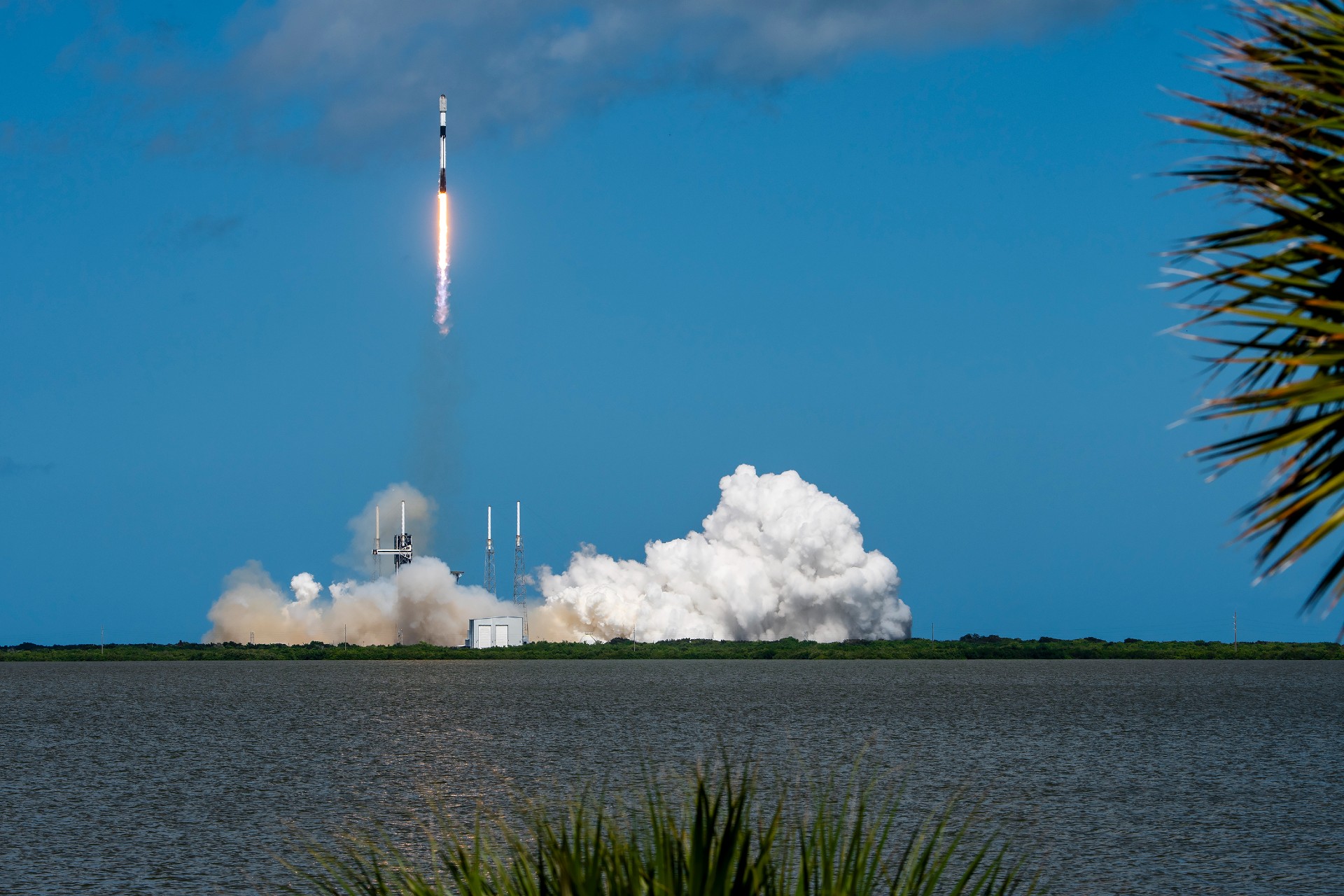
SpaceX has reached an incredible milestone with its Starlink program, officially surpassing 10,000 satellites launched into low Earth orbit since starting the program back in 2019.
Last Sunday, October 19, SpaceX launched its 131st and 132nd Falcon 9 missions of 2025, one from Cape Canaveral, Florida, and the other from Vandenberg, California.
The 10,000th Starlink satellite was aboard the launch from California, which was Starlink 11-19, and held 28 v2 mini optimized satellites.
The achievement was marked by a satellite tracker developed by Jonathan McDowell.
🚨 With its Falcon 9 launch last Sunday, SpaceX officially has 10,000 Starlink satellites in orbit pic.twitter.com/xS5RVZ4ix0
— TESLARATI (@Teslarati) October 26, 2025
The first Starlink launch was all the way back on May 23, 2019, as SpaceX launched its first 60 satellites from Cape Canaveral using a Falcon 9 rocket.
Of the over 10,000 satellites in orbit, the tracker says 8,608 are operational, as some are intentionally de-orbited after becoming faulty and destroyed in the atmosphere.
SpaceX has truly done some really incredible things during its development of the Starlink program, including launch coverage in a global setting, bringing along millions of active subscribers that use the service for personal and business use, locking up commercial partnerships, and more.
Starlink currently operates in around 150 countries, territories, and markets and is available at least somewhere on all seven continents.
Additionally, Starlink has over 5 million subscribers worldwide, and 2.7 million have joined the program over the past year. It has revolutionized internet access on commercial aircraft as well, as several high-profile airlines like Qatar and United, among many others, have already installed Starlink on some of their planes to deliver more stable connectivity for passengers and crew.
SpaceX has the approval to launch 12,000 Starlink satellites from the FAA, but it plans to bring over 30,000 to its constellation, giving anyone the ability to have access to high-speed internet.
News
Tesla Full Self-Driving’s biggest improvements from v13 to v14

Tesla Full Self-Driving (Supervised) v14 has been out for several weeks now, and there are a tremendous number of improvements, as we have now reached the fourth iteration of the semi-autonomous software.
Tesla began the v14.1.4 launch last night, which included minor improvements and addressed brake-stabbing issues many owners have reported. In my personal experience, the stabbing has been awful on v14.1.3, and is a major concern.
However, many things have improved, and only a couple of minor issues have been recurring. Many of the issues v13 addressed are no longer an issue, so Tesla has made significant progress.
Here are some of the most notable improvements Tesla made with v14 from v13:
Better Lane Switching on Highways
One of my biggest complaints with v13 was that the “Hurry” Speed Profile would often stay in the left lane, even when there were no passing cars. The legality of cruising in the left lane fluctuates by jurisdiction, but my personal preference is to drive in the right lane and pass on the left.
That said, Tesla has improved FSD’s performance with more courteous lane behavior. It no longer camps in the left lane and routinely gets back in the right lane after passing slower cars.
More Awareness for Merging Traffic and Makes Courteous Moves
There have been times when FSD has been more aware of merging traffic, and even cross traffic, than most human beings.
Here are a few examples –
- Full Self-Driving lets a car out of cross traffic during a busy time of day. This road tends to get very congested, especially during rush hour, so the car that was let in by FSD would have been sitting there for likely a minute longer if my Tesla had not let him in:
When you realize Tesla Full Self-Driving is more courteous than most human drivers… pic.twitter.com/PnKJcTpwKu
— TESLARATI (@Teslarati) October 26, 2025
- A busy, four-lane expressway with a quick exit on the far side of the highway for this merging vehicle. I’ve seen some drivers be extremely inattentive and travel at the same speed as merging cars, making their entry onto the expressway less seamless. FSD doesn’t do that; it makes way for merging cars:
— Joey Klender (@KlenderJoey) October 26, 2025
More Confident Driving Around Mail Trucks…and Amish
I encounter a lot of Amish in my area of Pennsylvania, and they commonly use both shoulders and the road, so traffic can get congested at times.
In the past, I’ve taken over when encountering Amish buggies, mail trucks, or other vehicles that are moving slowly or making frequent stops. I have felt it is more logical to just take over in these situations.
I decided not to yesterday on a long drive through Lancaster, PA, and the FSD did a wonderful job of confidently overtaking these vehicles:
Let’s see how Tesla Full Self-Driving v14.1.3 handles Amish traffic
Used Dashcam for these; no GoPro in the car today pic.twitter.com/ZYxrBXD9nZ
— TESLARATI (@Teslarati) October 25, 2025
This was really impressive and fun to see. There was a slight stutter during one of the three instances, but overall, I didn’t have any concerns.
Object Avoidance
On v13, I almost let the car drive into a fallen branch in the middle of the road. A mile later, the car swerved out of the way for horse droppings. It was a beautiful, clear morning, and the fact that the car did not try to avoid the branch, but did steer away from poop, was concerning.
Tesla has obviously done a great job at refining FSD’s ability to navigate around these road hazards. Last night, it swerved around a dead animal carcass in the middle of the highway. I didn’t see it until we were already going around it:
Some more Tesla Dashcam footage that was very impressive – v14.1.3:
✅ Swerved to avoid an animal carcass on the highway
✅ Consideration move to allow a car to mergeDashcam weirdly makes things look slower than they actually occurred. These both were enough for me to hit the… pic.twitter.com/CjmYLOBMQU
— TESLARATI (@Teslarati) October 26, 2025
It was awesome to see this and never feel alarmed by the sharp movement. The maneuver was smooth and really well done.
Better Speed Consistency
With v13, I felt I had to constantly adjust the Speed Profile, as well as the Max Speed setting, when using FSD. With V14, I don’t feel like I am making as many adjustments.
Tesla axed the Max Speed setting altogether with v14, which was a good move, in my opinion. Choosing the Speed Profile is now more intuitive by using the right scroll wheel. If the car is traveling too fast or too slow, just change the profile.
Three things Tesla needs to improve with Full Self-Driving v14 release
V13 had some issues with local roads, and I felt it would travel at strange speeds. In a 45 MPH zone, it would sometimes take a long time to reach 40 MPH, then hover between 43 MPH and 47 MPH. It would then fluctuate between those two speeds, frustrating drivers behind me, understandably.
V14 gets up to speed much better and travels at speeds I’m much more comfortable with on both local roads and highways.
-
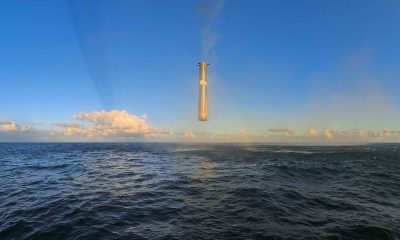
 Elon Musk1 week ago
Elon Musk1 week agoSpaceX posts Starship booster feat that’s so nutty, it doesn’t even look real
-

 Elon Musk1 week ago
Elon Musk1 week agoTesla Full Self-Driving gets an offer to be insured for ‘almost free’
-
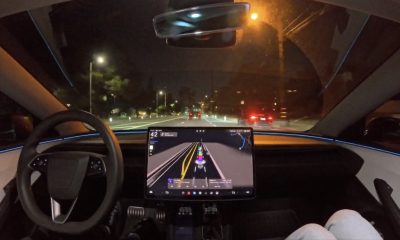
 News1 week ago
News1 week agoElon Musk confirms Tesla FSD V14.2 will see widespread rollout
-
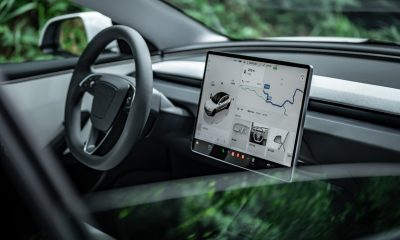
 News1 week ago
News1 week agoTesla is adding an interesting feature to its centerscreen in a coming update
-
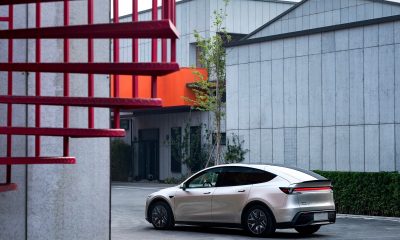
 News2 weeks ago
News2 weeks agoTesla launches new interior option for Model Y
-
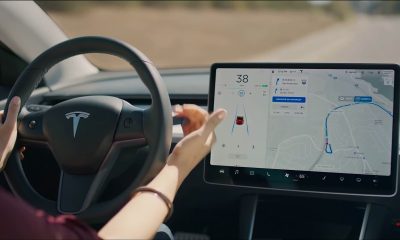
 News1 week ago
News1 week agoTesla widens rollout of new Full Self-Driving suite to more owners
-
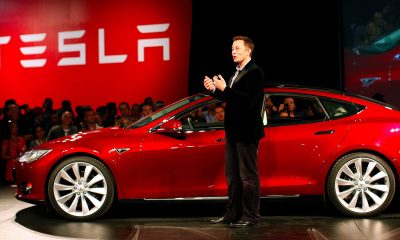
 Elon Musk1 week ago
Elon Musk1 week agoTesla CEO Elon Musk’s $1 trillion pay package hits first adversity from proxy firm
-

 News1 week ago
News1 week agoTesla might be doing away with a long-included feature with its vehicles


